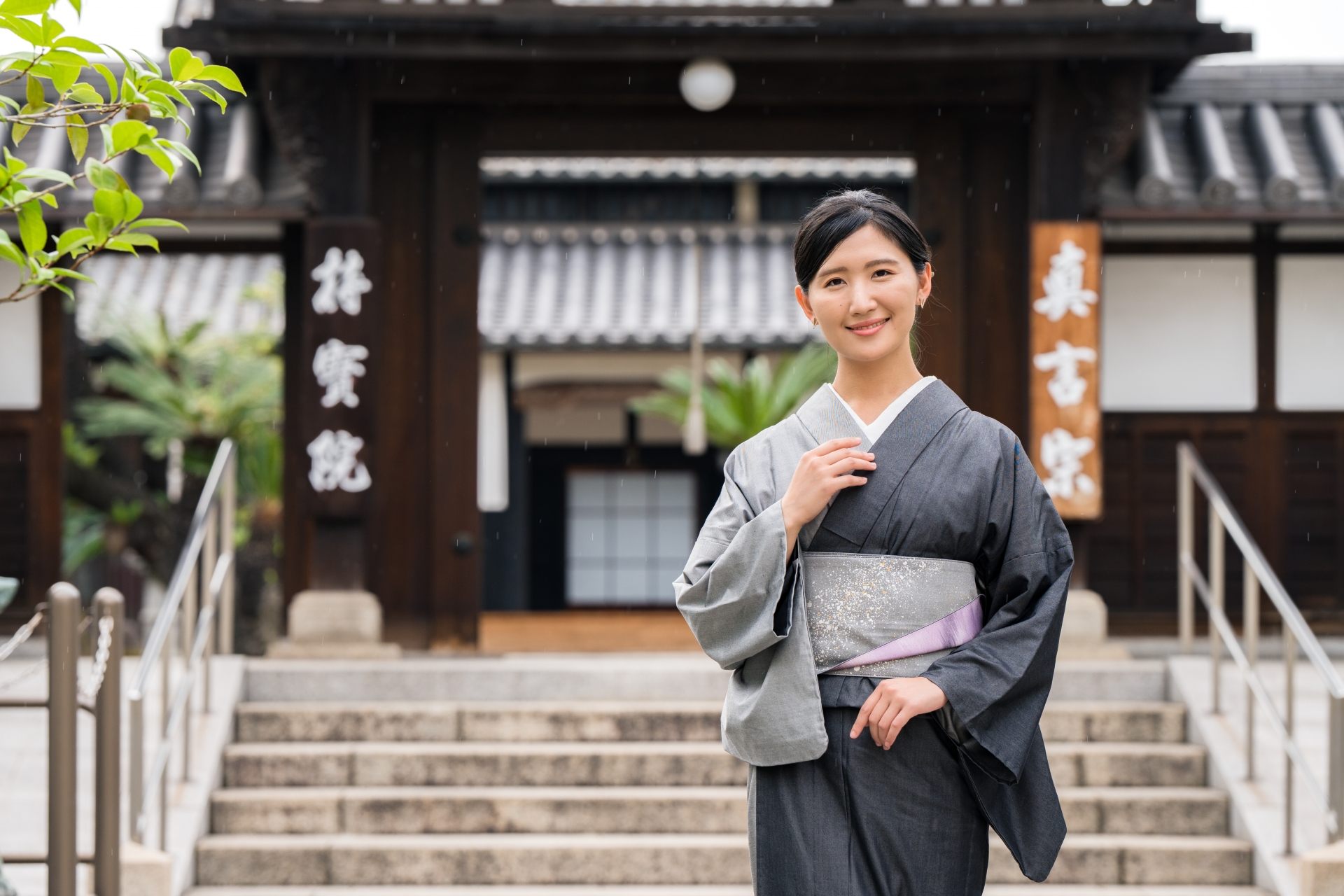Konnichiwa! Kimono, the iconic traditional Japanese garment, has captured the hearts of people worldwide with its elegant and timeless beauty. Whether you are fascinated by Japanese culture or simply adore the graceful allure of kimonos, buying one can be a delightful and fulfilling experience. However, before you take the plunge and purchase your very own kimono, there are several essential things to know to ensure you find the perfect fit and style.
Affiliate Disclaimer: I only recommend products I would use myself and all opinions expressed here are our own. This post may contain affiliate links that at no additional cost to you, I may earn a small commission. As an Amazon Associate I earn from qualifying purchases.
1. Understand Kimono Sizing
Yes, kimonos come in different sizes to accommodate various body types and preferences. Kimonos are traditional Japanese garments with a T-shaped, straight-cut design and wide sleeves. Traditionally, kimono sizes are not based on standard small, medium, or large labels but are rather measured by the length of the garment, specifically the sleeve length and the overall length from the neck to the hem.
There are different sizes available to fit individuals of varying heights and build. The most common sizes for kimono are:
- Small (S): Suitable for individuals with a height of around 4’11” to 5’3″ (150 cm to 160 cm).
- Medium (M): Fits individuals with a height of around 5’3″ to 5’7″ (160 cm to 170 cm).
- Large (L): Designed for individuals with a height of around 5’7″ to 5’11” (170 cm to 180 cm).
- Extra-Large (XL) or Plus Sizes: Available for taller individuals or those with a larger build.
Keep in mind that these size ranges can vary depending on the manufacturer and the specific style of the kimono. Additionally, modern kimono-inspired clothing may have more flexible sizing options that resemble standard sizes found in other clothing types. If you fall between sizes, consider opting for a slightly larger kimono, as it is easier to adjust the fit with an obi (belt) than to have a kimono that is too tight.
When purchasing a kimono, it’s essential to check the specific measurements provided by the seller or manufacturer to ensure the best fit for your body type. Some kimonos may also feature adjustable ties or belts that can be used to cinch the garment to your preferred fit.
2. Consider the Occasion and Season
Kimonos come in various styles suitable for different occasions and seasons. There are formal kimonos, such as furisode (long-sleeved kimonos) worn by unmarried women on special occasions like weddings and ceremonies. Casual kimonos like yukata are perfect for summer festivals and outings. Choose a kimono that suits the purpose and reflects your personal style. For more info about the differences between Yukata and Kimonos click here.
For colder weather, opt for kimonos made of thicker fabrics like wool or lined silk. Lightweight materials such as cotton or silk are ideal for warm weather and indoor events.
3. Appreciate the Design and Patterns
Kimonos boast an extensive array of captivating designs and patterns, each with unique meanings and symbolism. From delicate floral motifs to bold geometric patterns, the design you choose can convey your personality and taste. Some popular designs include cherry blossoms (sakura) for beauty and transience, cranes for longevity and good fortune, and waves (seigaiha) for harmony and peacefulness.
Take the time to explore the different designs and find one that resonates with you. Remember that the design and colors can also vary depending on the formality of the occasion, so keep this in mind while making your selection.
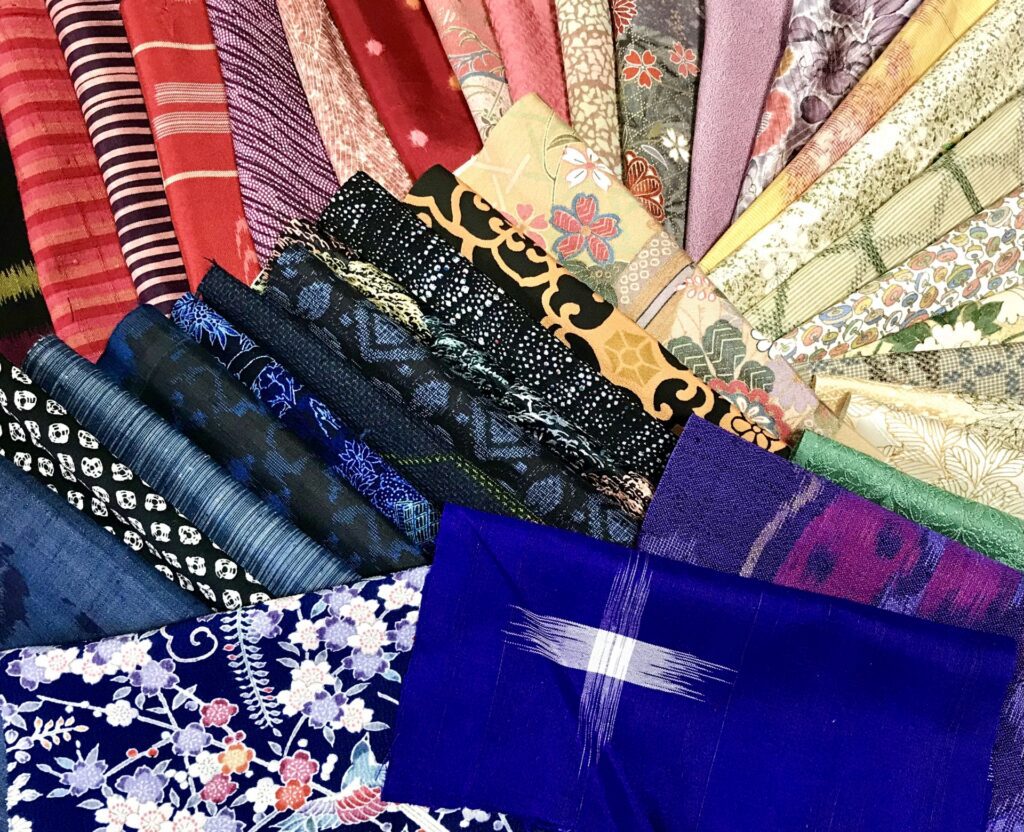
4. Embrace the Beauty of Obi
The obi, a wide belt worn around the waist, is an integral part of the kimono ensemble. It not only accentuates the waist but also adds an extra touch of elegance to the overall look. There are various styles of obi to choose from, ranging from simple and narrow to ornate and wide.
For formal occasions, consider an obi with intricate embroidery or elaborate patterns. Casual outings may call for a simpler and more comfortable obi. Remember that tying an obi can be a skillful art, so you might want to learn different tying techniques or seek assistance when needed.
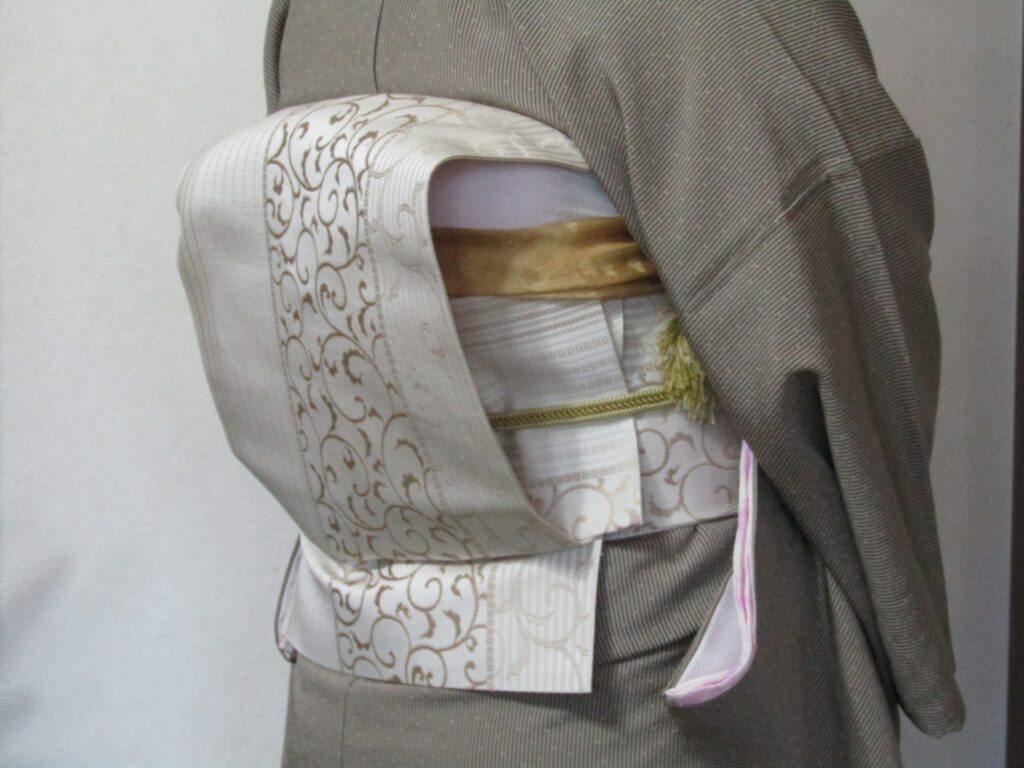
5. Complete Your Kimono Outfit
To complete your kimono outfit, you will need a few essential articles:
- Unlined Undergarments: The kimono is traditionally worn over undergarments known as juban. These undergarments help protect the kimono and absorb sweat.
- Tabi Socks: Tabi socks are split-toe socks typically worn with traditional Japanese footwear. They ensure a comfortable fit with geta or zori sandals.
- Geta or Zori: Geta are wooden sandals with two elevated teeth, while zori are flat sandals. Both are suitable for wearing with kimonos, depending on the occasion and formality.
- Koshihimo and Datejime: Koshihimo are long cords used to tie the kimono securely, while the datejime is a narrow belt tied over the koshihimo to keep the obi in place.
- Haori or Hanten: Haori is a kimono jacket worn over the kimono, providing extra warmth and an added layer of elegance. For more casual occasions, a hanten, a padded kimono jacket, can be a stylish option.
With these essential articles, you can confidently rock your kimono ensemble with grace and poise.
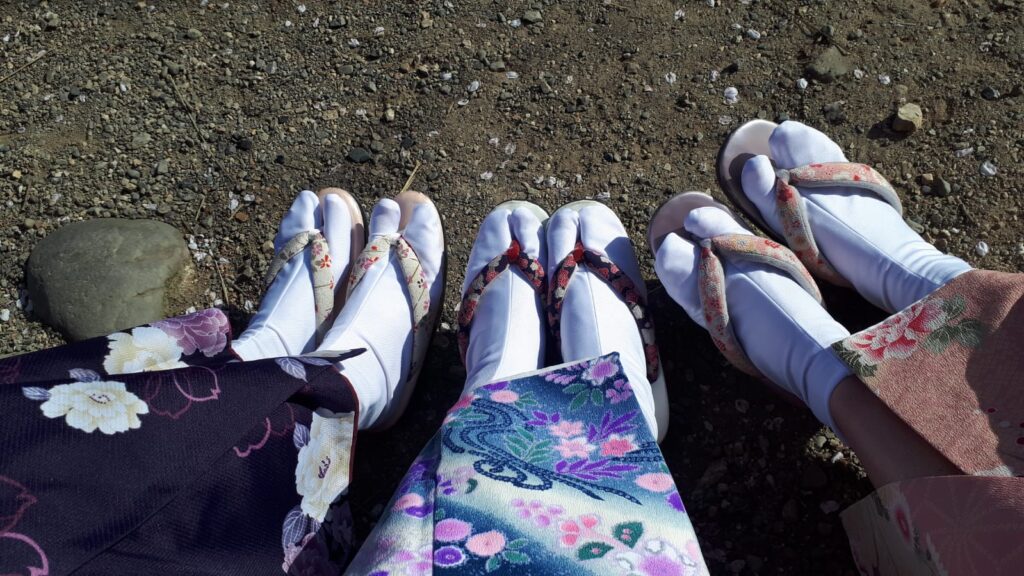
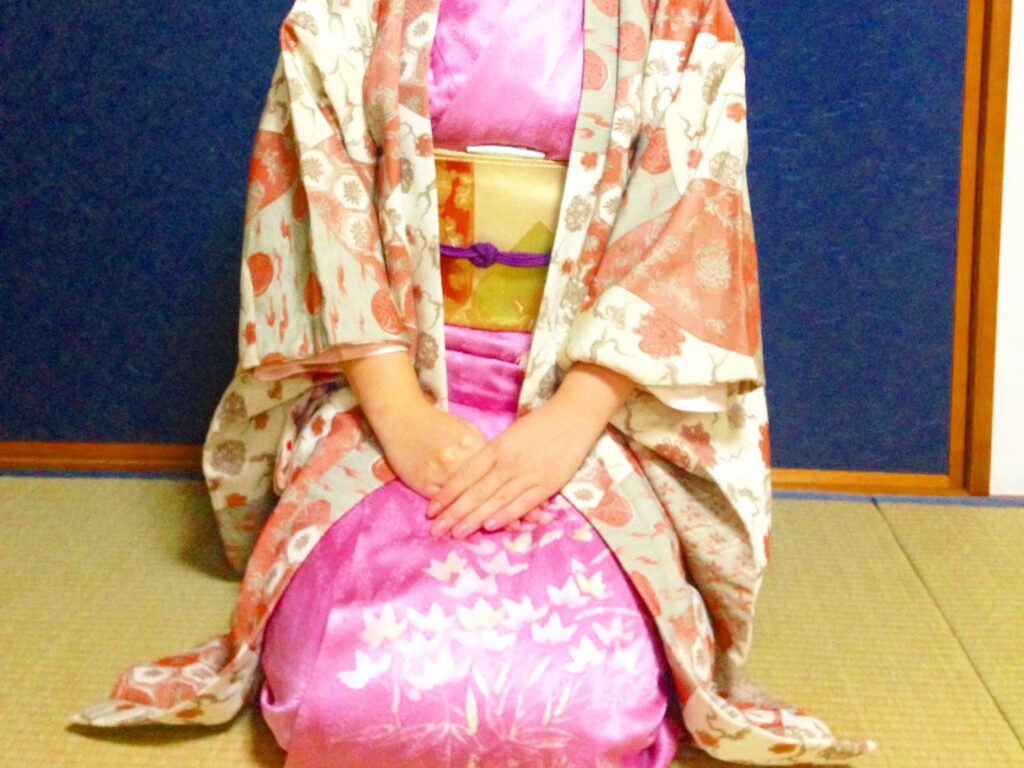
6. Understand Your Budget
The cost of kimonos can vary significantly depending on several factors such as the type of kimono, the material, the quality of craftsmanship, the complexity of the design, and the brand or seller. Traditional kimonos made of high-quality silk and featuring intricate hand-painted or hand-woven designs can be quite expensive, while more casual and machine-produced kimonos made of cotton or synthetic materials tend to be more affordable.
Here’s a general price range for different types of kimonos:
- Casual Cotton Yukata: Yukata is a lightweight and more casual type of kimono often worn during summer festivals (understand the difference between a Yukata and a Kimono here). These are typically the most affordable, and you can find them starting from $30 to $100, depending on the quality and design.
- Machine-made Silk Kimono: For a machine-produced silk kimono with simple designs, prices can range from $100 to $500. These are often considered mid-range options and are suitable for various occasions.
- Handmade Silk Kimono: Handmade silk kimonos with more elaborate designs or craftsmanship can cost anywhere from $500 to $20,000 or more. These high-quality kimonos are often reserved for formal occasions or collectors.
- Vintage or Antique Kimonos: Antique or rare vintage kimonos, especially those with historical significance or unique designs, can command high prices, ranging from a few hundred to several thousand dollars.
Keep in mind that these price ranges are approximate, and the actual prices may vary based on the seller, location, and other market factors. Additionally, some retailers offer kimono sets that include additional accessories like obi, which may influence the overall cost.
On top of the actual Kimono, reserve budget for the other articles you will need to complete the outfit (from above). These all together can range anywhere from $200 to over well over $2000.
If you’re on a budget or looking for a more affordable option, consider checking out second-hand shops, online marketplaces, or attending local cultural festivals where vendors might offer reasonably priced kimonos and yukata. However, always ensure that the kimono you’re buying is in good condition and suits your needs and preferences.
Embrace the Timeless Charm of Kimono
Picking a kimono is an enriching experience that allows you to connect with the rich cultural heritage of Japan while embracing the beauty of traditional fashion. Understanding the sizing, considering the occasion and season, appreciating the design and patterns, and embracing the beauty of the obi are all crucial aspects to keep in mind. Completing your kimono outfit with the necessary articles ensures you achieve an authentic and polished look.
So, take your time, explore the options, and find the kimono that resonates with you. Let the elegance and allure of the kimono envelop you as you embark on a journey of timeless charm and cultural appreciation.
Sayonara and happy kimono shopping!

